| |
Reduced Cardiac Strain Among Women with HIV Relates to Inflammatory Monocyte Activation
|
| |
| |
Cardiac strain or myocardial strain describes the deformation of the cardiac wall or chamber from a relaxed to a contracted condition more precisely the alteration of length in one dimension or spatial orientation.
- Women with HIV (WWH), as compared to women without HIV, have an increased risk of heart failure (HF) and worse HF outcomes.
- WWH had reduced cardiac strain compared to women without HIV (GLS in WWH versus women without HIV: -19.4±3.0 vs -23.1±1.9%, P<0.0001).
- Among WWH, increased expression of HLA-DR by inflammatory monocytes was associated with cardiac strain, even after controlling for HIV- specific parameters.
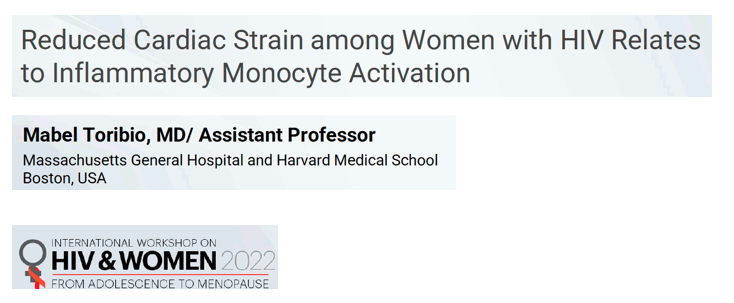
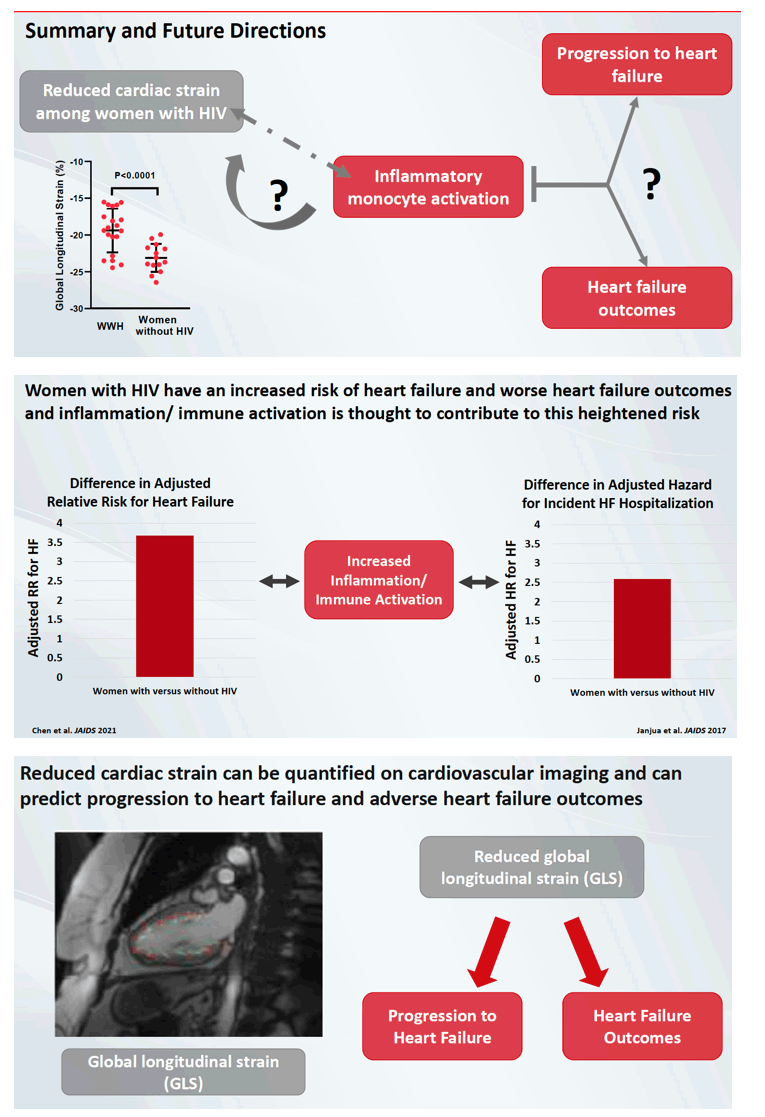
Background: Women with HIV (WWH), as compared to women without HIV, have an increased risk of heart failure (HF) and worse HF outcomes. Heightened immune activation among WWH on anti-retroviral therapy (ART) is felt to contribute to this increased HF risk and to adversely affect HF outcomes. General-population based studies have shown that cardiac strain, quantified on cardiovascular imaging as global longitudinal strain (GLS), has superior prognostic value with respect to the progression of subclinical cardiac dysfunction to HF and adverse HF outcomes. We hypothesized that WWH (versus women without HIV) without a prior history of cardiovascular disease (CVD) would have reduced cardiac strain in relation to heightened immune activation.
Methods: In a prospective, cross-sectional study, 20 WWH on ART and 14 women without HIV, group-matched on age and BMI, were enrolled and underwent cardiovascular MRI and systemic immune phenotyping. Women aged 40 to 75 years and without a history of diabetes or CVD were eligible. Cardiac strain was compared in women with versus without HIV and relationships between cardiac strain and other cardio-immune parameters were interrogated. Multivariable regression modeling was performed among the whole group, with cardiac strain, as the dependent variable and with HIV status, age, and ASCVD risk score as independent variables. Multivariable regression modeling was also performed among the subgroup of WWH, with cardiac strain as the dependent variable and immune/HIV-specific parameters as independent variables.
Results: Women with versus without HIV were similar in age (52±4 vs 53±6 years, P=0.61) and BMI (32±7 kg/m2 for both groups, P=0.73). WWH had reduced cardiac strain compared to women without HIV (GLS in WWH versus women without HIV: -19.4±3.0 vs -23.1±1.9%, P<0.0001). In modeling among the whole group, HIV status remained an independent predictor of cardiac strain (Overall Model: R=0.62, P=0.003; HIV status: P=0.0003). Among the whole group (but not in sub- group analyses), cardiac strain related to left ventricular ejection fraction (LVEF), left atrial passive EF, and LV mass index (data not shown).
Among the whole group and among WWH (but not among women without HIV), GLS related to an increased density of expression of HLA-DR on the surface of CD14+CD16+ monocytes, reflective of monocyte activation (Whole Group: ρ=0.53, P=0.001; WWH: ρ=0.45, P=0.0475). Among WWH, the density of expression of HLA-DR on the surface of CD14+CD16+ monocytes remained an independent predictor of GLS even after controlling for CD4+ T-cell count and HIV viral load (Whole Model: R=0.63, P=0.0499; CD14+CD16+ MFI of HLA-DR: P=0.02).
Conclusions: WWH versus women without HIV have reduced cardiac strain, which is of relevance to heightened HF risk and adverse HF outcomes. In our cohort, HIV status remained a predictor of cardiac strain controlling for other relevant parameters. Among WWH, increased expression of HLA-DR by inflammatory monocytes was associated with cardiac strain, even after controlling for HIV- specific parameters. Future studies among WWH are needed to examine the role of activated inflammatory monocytes in the development of reduced cardiac strain and to determine whether targeting this immune pathway may reduce risks of HF and/or adverse HF outcomes.
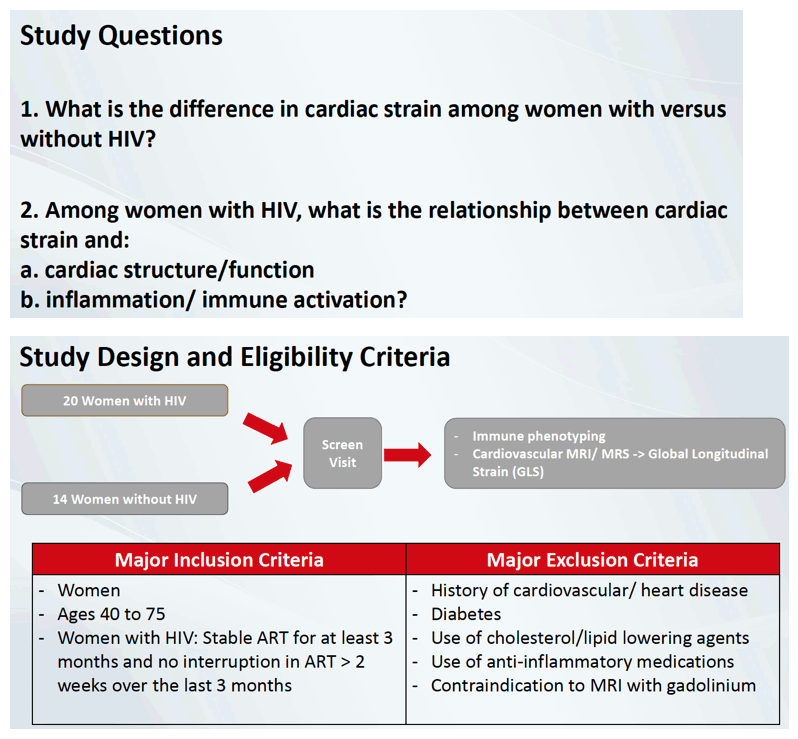
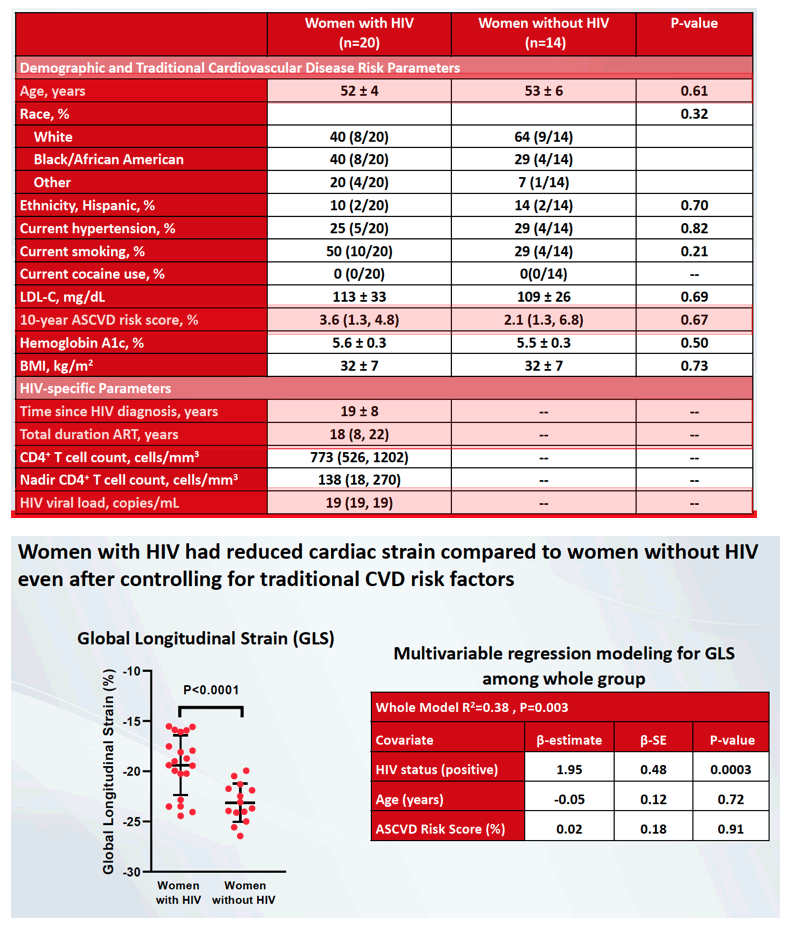
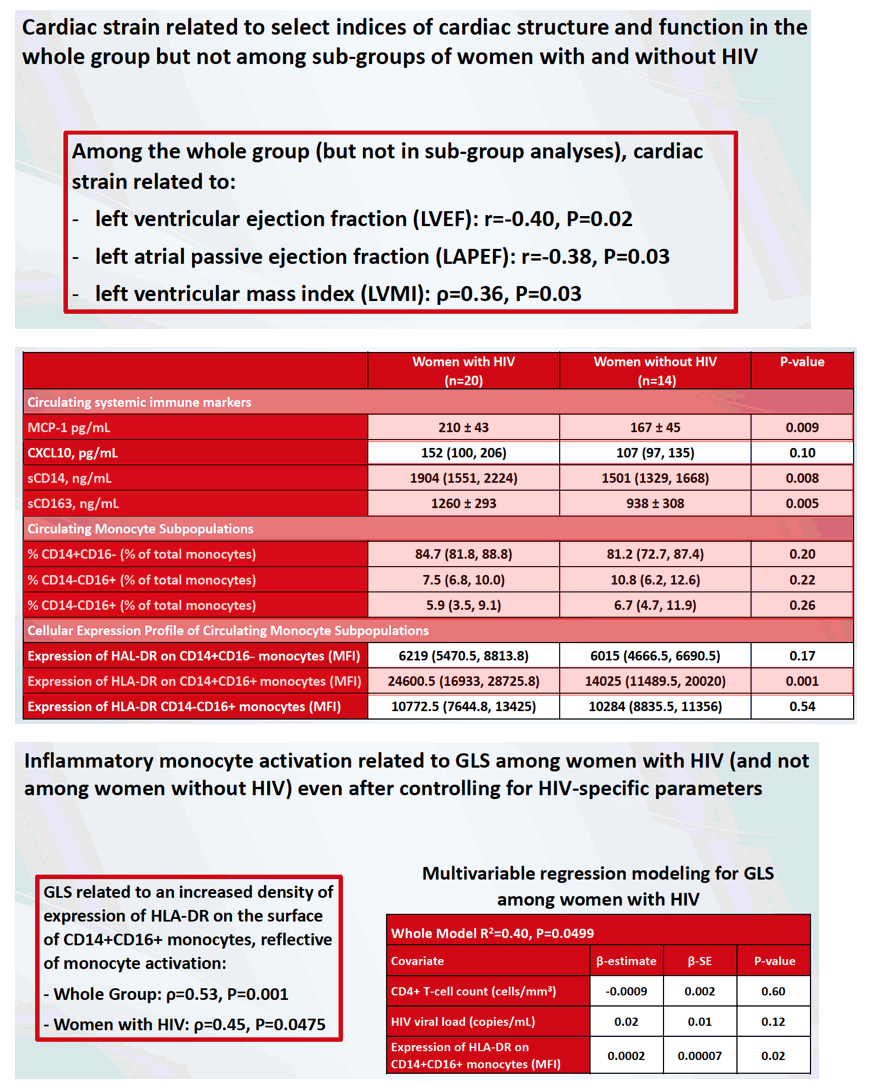
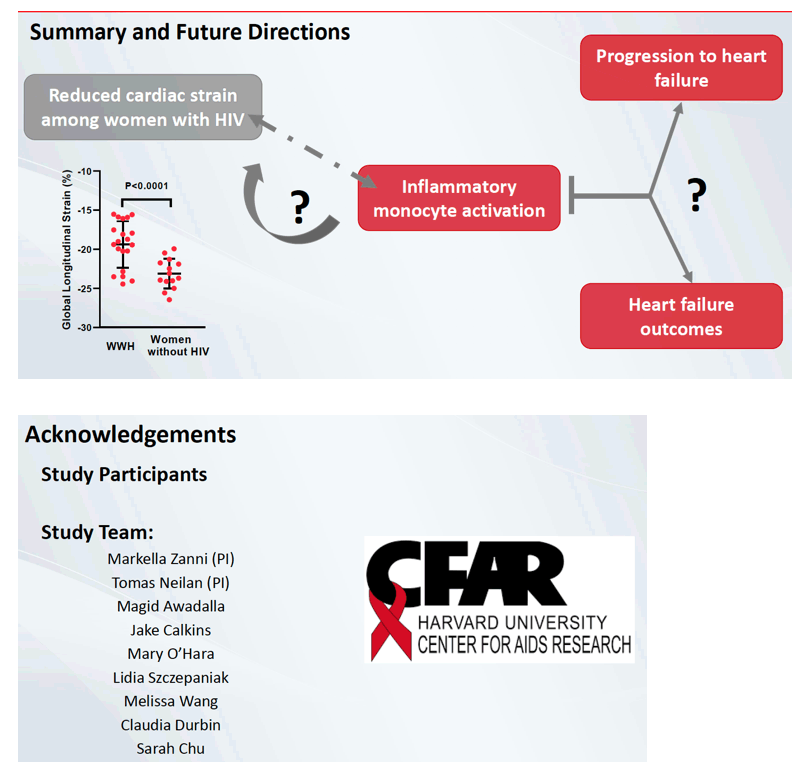
|
|
| |
| |
|
|
|